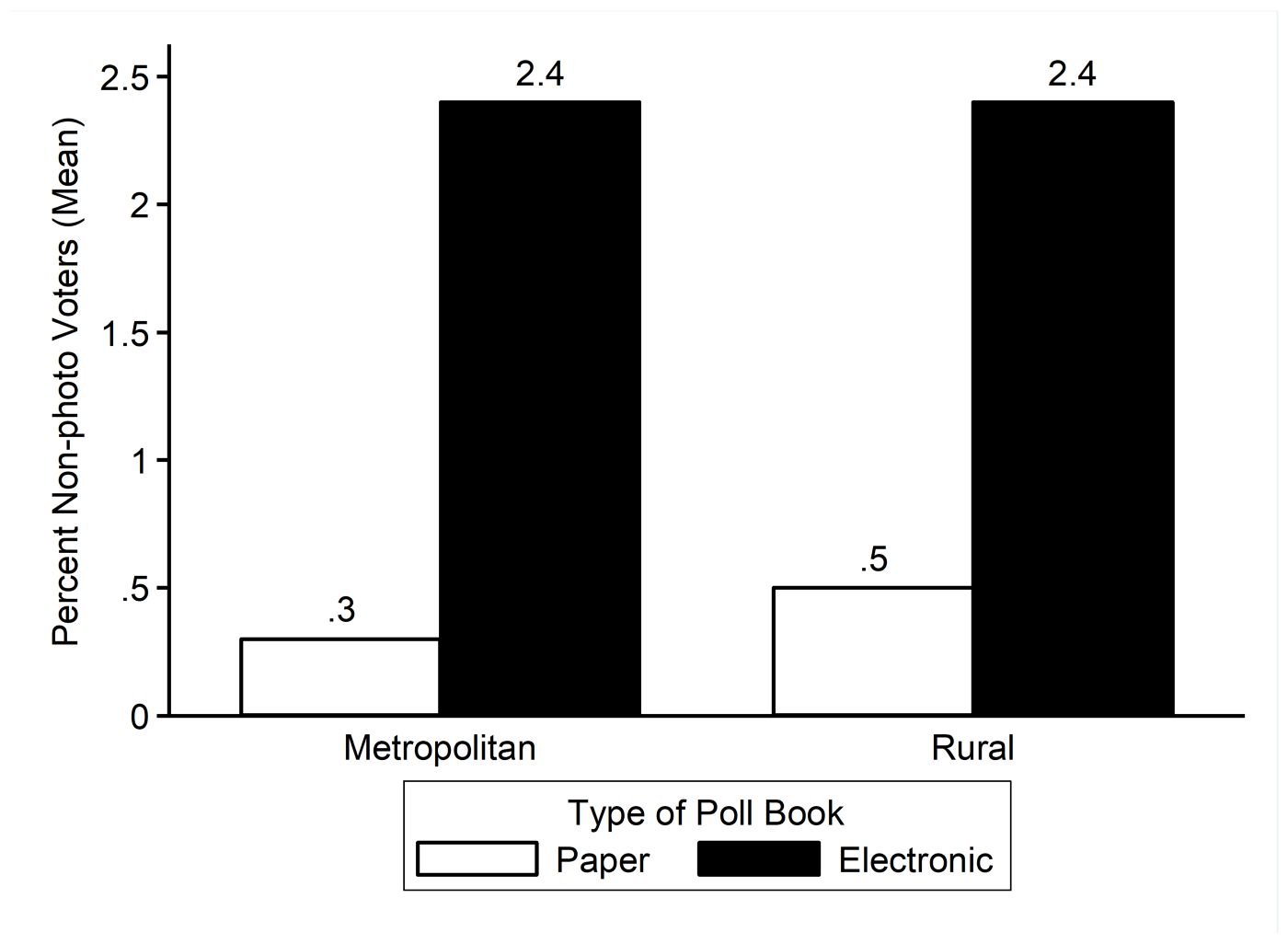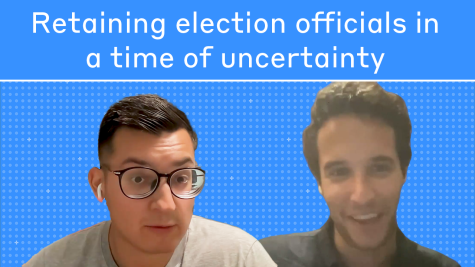Photo ID Implementation in Missouri Counties
The MIT Election Data and Science Lab helps highlight new research and interesting ideas in election science, and is a proud co-sponsor of the Election Sciences, Reform, & Administration Conference (ESRA).
David C. Kimball and Joseph Anthony recently presented a paper at the 2018 ESRA conference entitled, “Photo ID Implementation in Missouri Counties.” Here, they summarize their analysis from that paper.
This study is a preliminary examination of the implementation of a new photo identification (ID) requirement for voters in Missouri. Over the past year, this law has been enforced in almost 200 municipal and special elections administered by local jurisdictions around the state.
We observe two types of local variation in implementation: (1) whether to share information about the voters who are checked in without a valid photo ID; and (2) the frequency of non-photo voters casting ballots. We observe higher rates of non-photo ID voters in local jurisdictions using electronic poll books to check in voters. The learned behavior of some poll workers and voters suggests that the use of polling place technology should be closely observed when photo ID laws are enforced.
The photo ID requirement in Missouri took effect June 1, 2017. The identification requirement applies to in-person voters, but not to people who vote absentee by mail. Voters who lack photo ID but who provide a valid non-photo ID and sign a statement attesting to their lack of a photo ID can still vote a regular ballot. Those without any acceptable identification can cast a provisional ballot. The provisional voters will have their ballots counted if they return to the polling place on Election Day with a valid photo ID, or if their signature at the polling place matches their signature in the voter registration file.
Election administration in Missouri is highly decentralized, with 116 local jurisdictions that enjoy considerable discretion in choosing their own election technology. To date, local jurisdictions in Missouri have held almost 200 low-turnout local and special elections since the photo ID requirement took effect. As a result, every jurisdiction in the state has administered at least one election with the photo ID requirement.
One element of policy implementation is the information that is shared with the public about the new policy. After each election, we sent a public records request via email to the top county election official, asking for the names and addresses of each registered voter who cast a provisional ballot or an affidavit ballot without a photo ID. There is disagreement among local officials about whether the forms completed by voters lacking photo identification are public records. Roughly half of the local jurisdictions we contacted partly fulfilled our records requests, with Democratic officials and rural jurisdictions most likely to share information.
Based on the data we collected from state and local officials, we have complete voter totals for 130 elections held to date under the photo ID requirement in Missouri. In those elections, roughly 1.9% of voters checked in without valid photo ID. The vast majority of the non-photo ballots were cast by voters who signed an affidavit after showing non-photo identification. Among the provisional ballots, 79% were counted, mostly because of a signature match.
There is considerable variation across jurisdictions in the number of voters who check in without valid photo ID. Our clearest finding is that jurisdictions using electronic poll books check in more non-photo voters (2.4%, on average) than jurisdictions using paper poll books (0.5%, on average). A little more than half of the counties in Missouri use electronic poll books; they are more common in highly populated urban jurisdictions.
The figure below shows that electronic poll books seem to produce a higher rate of non-photo ID voters than paper poll books, regardless of location. Conversations with local officials indicate that many jurisdictions programmed electronic poll books to scan voter ID cards, which do not include a photograph. Some voters and poll workers grew accustomed to this practice before the photo ID requirement took effect.

We urge some caution in extrapolating from our observations of photo ID implementation to higher-turnout elections coming soon. Nevertheless, local elections in Missouri indicate that poll worker behavior and the use of check-in technology deserve careful scrutiny when implementing photo ID laws. In particular, the way electronic poll books are used to sign in voters may overstate the number of actual voters without photo ID. It is fortunate that small-scale local elections have provided the first run for the new photo ID requirement in Missouri to help work out the kinks before a major election takes place.



